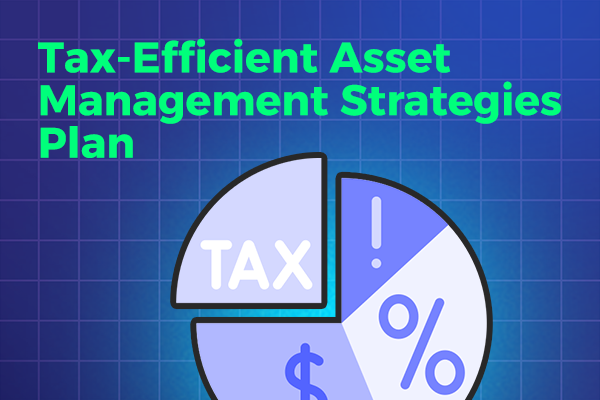Investing in bonds is an excellent way to diversify your investment portfolio and generate fixed income. Bonds provide investors with a regular flow of income and can be a low-risk investment option. This section will provide an overview of bond investing and the key factors to consider when investing in bonds.
Bonds are a type of debt security where an investor loans money to an entity such as a government or company. In return, the entity promises to repay the borrowed amount with interest over a designated period. Bonds can be government bonds or corporate bonds, and each type has its unique characteristics.
When investing in bonds, it is crucial to understand the bond market, including how bond prices and yields are determined. The value of a bond can be influenced by different factors such as interest rates, supply and demand, and the credit rating of the issuer.
There are various types of bonds available, such as treasury bonds, municipal bonds, and high-yield bonds. Each type of bond comes with its risks and rewards, and it’s essential to have a clear understanding of these before investing.
Investing in bond funds is another popular way to gain exposure to bonds. These funds pool money from many investors and invest in a variety of bonds, providing instant diversification. This section will discuss the steps involved in investing in bonds and offer tips for successful bond investing, including the importance of credit ratings, diversification, and monitoring interest rate changes.
Key Takeaways
1- Bonds are a type of debt security where an investor loans money to an entity.
2- Investing in bonds is a way to diversify an investment portfolio and generate fixed income.
3- It is essential to understand the bond market, including how bond prices and yields are determined.
4- There are different types of bonds available, each with its risks and rewards.
5- Investing in bond funds is a popular way to gain exposure to bonds.
6- Successful bond investing requires diversification, understanding credit ratings, and monitoring interest rate changes.
Understanding Bonds
When it comes to investing, bonds are often considered a smart way to diversify a portfolio and generate income. But what exactly are bonds?
A bond represents a loan made by an investor to a borrower, typically a corporation or government entity. In exchange for the loan, the borrower agrees to pay the investor a fixed rate of interest over a specified period of time, known as the bond’s term.
There are two main types of bonds: government bonds and corporate bonds.
| Government Bonds | Corporate Bonds |
| Issued by national governments to fund public projects or pay off debt. | Issued by companies to raise capital for various purposes, such as expanding operations. |
| Considered less risky than corporate bonds due to the backing of the government. | Considered riskier than government bonds due to the potential for default or bankruptcy. |
| Typically have lower yields than corporate bonds. | Typically have higher yields than government bonds. |
It’s important to note that bonds are not without risks. Bond prices are subject to fluctuations due to changes in interest rates, inflation, and creditworthiness of the borrower. In the next section, we’ll explore the intricacies of the bond market and how bond prices are determined.
Unlock Wealth: Sign Up Now for Smart Investing Success
The Bond Market
The bond market is a vast and complex financial market where investors buy and sell bonds. Bond prices and yields are determined by the supply and demand of bonds in this market. When demand for bonds is high, prices increase, and yields decrease. Conversely, when demand for bonds is low, prices decrease, and yields increase.
The relationship between bond prices and interest rates is essential to the bond market. When interest rates rise, bond prices decrease because new bonds are issued at higher interest rates, making the existing bonds less attractive. Similarly, when interest rates fall, bond prices increase because new bonds are issued at lower rates, making the existing bonds more valuable.
Bond yield is another important concept in the bond market. It represents the return an investor expects to receive from a bond investment. Yield is calculated by dividing the annual interest payment by the bond’s price. As bond prices change and interest rates fluctuate, so does the yield of a bond.
Types of Bonds
There are various types of bonds available for investors, each with its unique characteristics and risks. Here are the most common types of bonds:
| Bond Type | Description | Issuer |
| Treasury bonds | Backed by the full faith and credit of the US government, these bonds have a low risk of default but offer lower returns. | US government |
| Municipal bonds | Issued by state and local governments, these bonds provide tax-free income to investors and fund public projects such as schools and roads. | State and local governments |
| Corporate bonds | Issued by companies to raise capital, these bonds offer higher returns but come with a higher risk of default. | Corporations |
| High-yield bonds | Also known as junk bonds, these bonds have a higher risk of default but offer higher returns to compensate for the risk. | Corporations |
Investors should carefully assess the risks and potential returns of each type of bond before investing. Treasury bonds are the safest option but offer the lowest returns, while high-yield bonds have the potential for high returns but come with a greater risk of default. Municipal bonds are a popular choice for investors in higher tax brackets due to their tax-free income.
Invest in Bonds Rules
Investing in bonds can be a smart way to diversify your portfolio and generate a fixed income. Here are the steps critical to invest in bonds:
1- Define your investment goals: Determine your investment objectives and risk tolerance to identify the type of bonds that are suitable for your portfolio.
2- Choose your bonds: Consider the bond’s yield, maturity, credit rating, and other factors when selecting bonds to invest in. You can choose to invest in individual bonds or bond funds that offer greater diversification.
3- Place your order: You can purchase bonds directly from the issuer or through a broker or financial advisor. Follow the specific instructions provided by the issuer or your financial institution to place your order.
4- Monitor your investments: Keep track of your bond investments’ performance and stay informed about any market changes that may impact your portfolio. Consider rebalancing your portfolio periodically to ensure it aligns with your investment goals and risk tolerance.
Bond funds are an attractive option for investors who lack the expertise or resources to conduct detailed research on individual bonds. Bond funds pool investors’ money to purchase a diversified portfolio of bonds managed by professional fund managers.
Fixed income generated by bond investments is an excellent way to secure a stable stream of income while protecting against inflation. However, it is essential to conduct thorough research and understand the risks associated with different types of bonds before investing.
Invest in bonds tips
Investing in bonds can be a smart way to generate a steady stream of income and diversify your investment portfolio. However, it is important to approach bond investing with caution and take steps to manage risks. Here are some tips for successful bond investing.
Diversify Your Bond Portfolio
One of the most important steps in successful bond investing is diversification. By spreading your investments across different types of bonds, you can minimize the impact of any one bond defaulting or losing value. Consider investing in a mix of government bonds, municipal bonds, and corporate bonds to balance your portfolio.
Understand Credit Ratings
Before investing in any bond, it is important to understand its credit rating. Bond credit ratings indicate the issuer’s likelihood of defaulting on the bond. Bonds with higher credit ratings are generally considered less risky, but they also offer lower returns. It is important to find the right balance between risk and reward based on your financial goals and risk tolerance.
Monitor Interest Rate Changes
The price of bonds is directly impacted by changes in interest rates. When interest rates rise, bond prices typically fall, and vice versa. It is important to stay up-to-date on interest rate changes and adjust your bond portfolio accordingly. Consider investing in bond funds that are actively managed to help ensure your investments are aligned with current market conditions.
Consider Bond Funds
Bond funds can be a great way to gain exposure to a variety of bonds without having to invest in individual bonds. Bond funds can also offer professional management, diversification, and liquidity. There are a variety of bond funds available, from short-term bond funds to high-yield bond funds. Before investing in a bond fund, be sure to research the fund’s fees, performance history, and investment strategy.
Manage Risk
Like any investment, bond investing comes with risks. It is important to manage these risks to ensure you are maximizing your returns. Consider to invest in bonds with a shorter maturity date or in bond funds that hold a mix of short-term and long-term bonds. It is also important to avoid chasing high yields, as this can lead to investing in high-risk bonds that may not be suitable for your investment goals.
By following these tips, you can approach bond investing with confidence and minimize your investment risks. With the right strategy, bond investing can be a valuable addition to your investment portfolio.
Conclusion
Investing in bonds is a smart way to diversify your portfolio and generate income. By understanding the various types of bonds and the factors that affect their prices, you can make informed decisions when selecting bonds to invest in.
When investing in bonds, it’s important to consider the risks and benefits associated with different types of bonds, as well as the role of bondholders. Bond funds are a popular investment option that provide the potential for generating a fixed income through bond investments.
Invest in Bonds Tips
To maximize returns and manage risks, it’s important to diversify your bond portfolio, understand credit ratings, and monitor interest rate changes. By following these practical tips, you can achieve success in bond investing.
Overall, bonds offer a reliable and stable investment option for those looking to diversify their portfolio and generate income. Consider to invest in bonds to your investment strategy to reap the benefits they offer.




